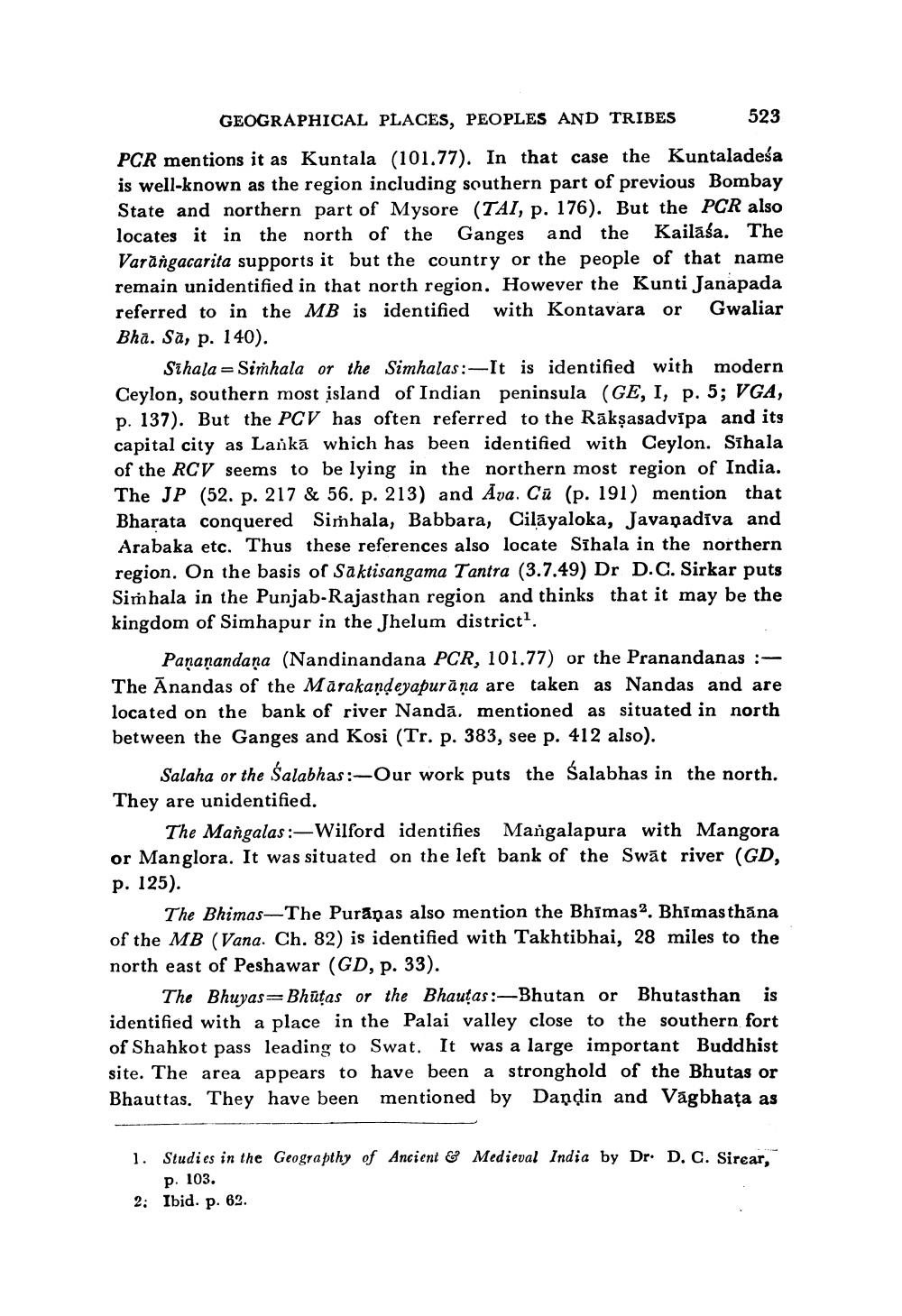________________
523
GEOGRAPHICAL PLACES, PEOPLES AND TRIBES
PCR mentions it as Kuntala (101.77). In that case the Kuntaladeśa is well-known as the region including southern part of previous Bombay State and northern part of Mysore (TAI, p. 176). But the PCR also locates it in the north of the Ganges and the Kailasa. The Varangacarita supports it but the country or the people of that name remain unidentified in that north region. However the Kunti Janapada referred to in the MB is identified with Kontavara or Gwaliar
Bha. Să, p. 140).
Sihala Simhala or the Simhalas:-It is identified with modern Ceylon, southern most island of Indian peninsula (GE, I, p. 5; VGA, p. 137). But the PCV has often referred to the Rākṣasadvīpa and its capital city as Lanka which has been identified with Ceylon. Sihala of the RCV seems to be lying in the northern most region of India. The JP (52. p. 217 & 56. p. 213) and Ava. Cu (p. 191) mention that Bharata conquered Simhala, Babbara, Cilāyaloka, Javaņadīva and Arabaka etc. Thus these references also locate Sihala in the northern region. On the basis of Saktisangama Tantra (3.7.49) Dr D. C. Sirkar puts Simhala in the Punjab-Rajasthan region and thinks that it may be the kingdom of Simhapur in the Jhelum district1.
Pananandana (Nandinandana PCR, 101.77) or the Pranandanas :The Anandas of the Marakandeyapurana are taken as Nandas and are located on the bank of river Nanda. mentioned as situated in north between the Ganges and Kosi (Tr. p. 383, see p. 412 also).
Salaha or the Salabhas:-Our work puts the Salabhas in the north. They are unidentified.
The Mangalas:-Wilford identifies Mangalapura with Mangora or Manglora. It was situated on the left bank of the Swat river (GD, p. 125).
The Bhimas-The Puraņas also mention the Bhimas2. Bhimas thāna of the MB (Vana. Ch. 82) is identified with Takhtibhai, 28 miles to the north east of Peshawar (GD, p. 33).
The Bhuyas Bhutas or the Bhautas:-Bhutan or Bhutasthan is identified with a place in the Palai valley close to the southern fort of Shahkot pass leading to Swat. It was a large important Buddhist site. The area appears to have been a stronghold of the Bhutas or Bhauttas. They have been mentioned by Danḍin and Vagbhata as
1. Studies in the Geograpthy of Ancient & Medieval India by Dr. D. C. Sirear, p. 103.
2: Ibid. p. 62.




